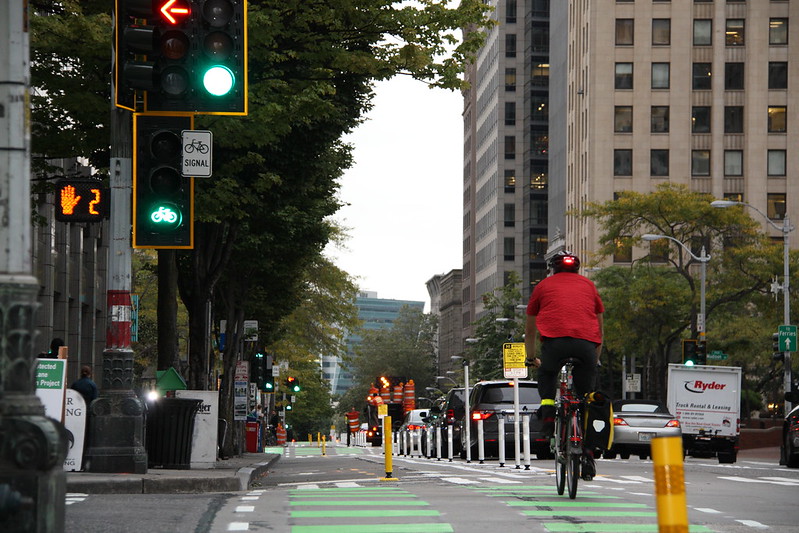The rising rate of pedestrian fatalities is a consequence of deadly design decisions that prioritize driver speed and convenience over the safety of all other road users. Today, we dig into one example: crosswalk signals.

As communities work to advance safe streets, they must also ensure that these efforts lead to design changes that effectively integrate with the technology managing traffic flow for all users. Many walk signals are timed based on outdated standards that prioritize maximum green time for all motorized vehicle movements. Signal timing gets reviewed on a case-by-case basis, leveraging a manual last published in 2015 that isn’t supplemented often to consider the diverse needs of pedestrians, such as people with disabilities, seniors, cyclists, or parents with strollers.
Walk signals are just one example of how our infrastructure prioritizes the speed of vehicles over the safety of other road users. This practice comes at a deadly cost.
We are in the midst of a historic and alarming increase in the number of people struck and killed while walking, which has been on a steady rise since 2009, reaching levels not seen in more than 30 years. Speed is the number one culprit in these fatalities. Speed is also the best predictor of whether or not a collision will result in an injury or death. Design elements, including effective traffic signals, are essential to reducing speeds and improving safety.
If not designed correctly, intersections can be one of the most dangerous places where folks in and outside of cars interact. There are many recent examples of places that experience a high number of crashes at crosswalks. Saint Paul, Minnesota is a prime example of this. In 2016, Shelby Kokesch was killed while attempting to cross Kellogg Boulevard, a busy thoroughfare, from the Minnesota History Center. Though Kokesch used a marked crosswalk, it lacked a stop sign or a crossing signal. While one car pulled over to let Kokesch and her mother pass, the second vehicle—an SUV—did not stop.
At the time, Saint Paul responded with higher traffic enforcement around crosswalks, ticketing drivers who failed to stop at marked crosswalks and yield to pedestrians. During the crackdown, Sergeant Jeremy Ellison reflected, “An overwhelming response from people is, ‘I didn’t see them.’ People are not paying attention and they’re driving too fast.”
This is a design problem—and it has a design solution
Signalized intersections draw attention to pedestrian crossings and help ensure that traffic comes to a complete stop before travelers enter the crosswalk. Street design can be more influential on driver behavior than speed limits or enforcement alone. Complete Streets—an approach to designing streets that prioritizes the safety and comfort of people who walk, bike, and roll—can lead to slower driver speeds, reducing the risk of crashes and roadway fatalities for folks both in and outside of cars.
Designing an intersection with safety in mind can take a lot of different forms, such as shortening the length of an intersection by reducing the number of vehicle lanes—or by ensuring appropriate time to cross the street. Walk signals and walk signal timing also play an important role by giving pedestrians adequate time to cross. For example, leading pedestrian intervals allow pedestrians to begin crossing the street before cars turn right or left, signaling to drivers that pedestrians are present and making it easier for them to see and yield to other people using the road.
One aspect of a Complete Streets approach is practicing effective community engagement. Administering walk audits with a variety of road users, community residents, and decision makers can assist municipal planners in determining whether a signal offers enough time to cross the street. By implementing this approach, planners and engineers can experience a street in the same way as the people who travel on it every day. Using this method can allow cities and states to make their streets safer and more accessible.
Pedestrian fatalities will continue to rise until we prioritize the safety of all road users over the speed of a few. The effective use of crosswalk signals, combined with other elements of safe street design, can reduce the danger on our roadways and ensure that everyone can safely get to where they need to go. Learn more about a Complete Streets approach here.
The post Rethinking the intersection to prioritize safety over speed appeared first on Transportation For America.











